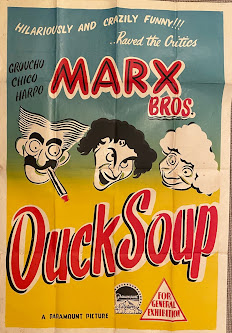Three Lessons We've Learned From Brown v. Board of Education
At the Equal Justice Society, we are working to reclaim the full protections of the 14th Amendment and help those who experience discrimination get their day in court. We know we have a tough and long road ahead in tackling our biggest challenge, namely overturning the "intent doctrine" as established in Washington v. Davis.
Yet,as we prepare for the next step in this critical work, we are glad to have the shining example that is Brown v. Board of Education - one of the most important decisions ever handed down by the United States Supreme Court - illuminating the way forward.
The Brown case, which ended the tyranny of "separate but equal" policies in America, was the result of a decades-long,multi-pronged, and disciplined strategy. Known as the "Houston Plan," the strategy first took shape at Howard University of Law School in the early 1930s, and combined impact litigation,innovative use of social science, and collaboration with civil rights organizations across the political spectrum.
Charles Hamilton Houston, Thurgood Marshall, Robert Carter, Constance Baker Motley, Jack Greenberg, and others litigated all around the country in their efforts to take down Plessy v. Ferguson,the case that enshrined "separate but equal" in the law. These brilliant strategists wove social science into the law to illustrate the corrosive effect segregation had on the psyches of both African Americans and whites, showing how one group internalized a sense of inferiority while the other, a sense of superiority. Their efforts culminated in the landmark decision that overturned Plessy on May 17, 1954.
Today,as we mark the 57th anniversary of Brown v. Board of Education,we want to highlight three lessons we have learned from this monumental and hard-fought victory:
- Structural change often takes a long time: There's an adage: if you're working on an issue that will be resolved during your lifetime, you're not working on a big enough issue. In today's fast-paced world, we often are pressured to produce immediate results. Yet, tough social problems can be overcome only through sustained and long-term advocacy. Even before the U.S. Supreme Court endorsed the constitutionality of racial segregation in Plessy in 1896, African Americans had suffered the effects of racism for years. This deep-rooted social inequality could not be turned around overnight. We can learn from Brown that even social ills that seem impossible to defeat can be tackled if we are strategic and patient.
- It takes a coalition to win change: The victory of overturning state-sponsored segregation did not just belong to the lawyers. Civil rights activists were in the streets protesting segregation while the legal strategy proceeded in the courts. For example, in June 1953, Blacks in Baton Rouge, Louisiana, launched a mass boycott against segregated buses. Led by the pastor of one of the Black churches in the city, the boycott resulted in a limited victory: while two side front seats of the bus could be reserved for whites, and the long rear seats for blacks, all other seating could be opened. Two and half years later, Rosa Parks refused to give up her seat on a Montgomery city bus to a white passenger, sparking the Montgomery Bus Boycott led by Dr. Martin Luther King Jr.
- We must continue the fight: Dr. King once said, "We must face the tragic fact that we are far from the promised land..." Those words still ring true today. More than five decades after Brown v. Board of Education, and 140 years after the enactment of the 14th Amendment, there is no doubt that deep racial disparities still persist. The Supreme Court has been systematically gutting the Brown decision over the past 57 years in ways that would make Thurgood Marshall and Constance Baker Motley weep. Both the Equal Protection and the Citizenship clauses of the 14th Amendment are under attack. In addition, the Right wing has executed an assault on government, taxes, and teachers, undermining our children's ability to get quality education in public schools. Recently, when conservative legislators in California were told that budget cuts would hurt public education, they replied, "We do not care. Our children are in private schools." We have to stay ever vigilant in the work to safeguard our rights.







0 comments :
Post a Comment